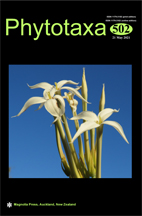Abstract
The pollen morphology of 17 taxa of Gundelia, of which 13 taxa are endemic to Turkey, was investigated by light microscopy (LM) and scanning electron microscopy (SEM). In this study, the pollen morphology of 16 taxa except G. tournefortii was investigated for the first time. The quantitative data were analyzed by descriptive statistics and multivariate statistics. The pollen grains are oblate spheroidal and prolate spheroidal in shape with the polar diameter of 37.01–61.2 μm and the equatorial diameter of 31.2–63.4 μm. The smallest pollen grains were observed in G. anatolica, G. rosea and G. tournefortii, while the largest pollen grains were observed in G. vitekii, G. komagenensis and G. colemerikensis. Pollen ornamentation is echinate in LM and echinate-microperforate in SEM. Statistically, the relationships between pollen characters of the examined taxa were identified using Principal Component Analysis (PCA) and Clustering Analyzis. In addition, a dendrogram was constructed by applying UPGMA based on the determined 15 pollen morphological characters, and the degree of their relationship was discussed. Polar axis, equatorial diameter and colpus length were the major explanations of the pollen morphological characters’ total variation in PCA. Pair group method was used to divide the main pollen taxa into three groups based on the pollen morphology by using arithmetic averages analysis (PCA scatterplot and cluster analysis). As a result, the pollen shape, polar axis, equatorial diameter and spine length were important characters distingushing the taxa from each other. We found some matches and mismatches between pollen and morphological characters, whose significance requires further study.

